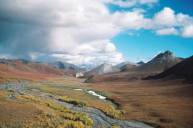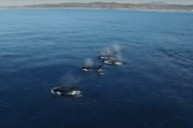If you have a bucket list of visiting every one of America's national monuments, then I have some bad news for you. The nation's largest monument is also incredibly hard to get access to. This is especially true if you are a tourist, sorry.
To view the nation's largest monument, you'd have to go to Hawaii. I'm talking about the Papahānaumokuākea reserve of course. President George W. Bush established the national monument in 2006. A trio of the National Oceanic & Atmospheric Administration (NOAA), the U.S. Fish & Wildlife Service (USFWS), and the Hawaii Department of Land and Natural Resources (DLNR) manage the site.
They also get some help from natives as well. Park superintendent Eric Roberts told Forbes, "Native Hawaiians, the original inhabitants of the Northwestern Hawaiian Islands . . . continue to maintain cultural connections and are actively involved in the management of the refuge and monument."
Papahānaumokuākea is America's largest national monument by far. It stretches 583,000 square miles (1.5 million sq km). That's close to the size of Alaska if we're talking size. It's bigger than all of the other monuments put together, stretching between Kaui and Midway Island.
"Overall monument-wide water quality parameters suggest relatively good conditions due primarily to the monument's remoteness and current regulations that limit access," says Ivan Vincente of the U.S. Fish & Wildlife Service. "Due to the monument's remoteness and protections, there are relatively few impacts from humans."
America's Largest Monument
However, Papahānaumokuākea has suffered some ecological damage.
"Past activities permanently altered some areas, and in some cases, resulted in habitat degradation," Vincente adds. "Human activities outside the monument, such as deposition of marine debris, can result in living resource, habitat, and water quality degradation. Other concerns including climate change and coral bleaching, diseases, and invasive species can threaten native biodiversity and habitats."
Since the national monument is so fragile and regarded, the state is keeping it safe from tourists. That means you can't visit it unless you get permission to do so. And, it's not easy getting permission.
"It's only by a permit that is issued by the monument's co-managers," says Roberts. Permits are given for "research, education, conservation and management, Native Hawaiian practices, special ocean use, and recreation (at Midway Atoll)." Since there's limited access, that makes it really difficult to see it for yourself.
Of course, you could always volunteer with the U.S. Fish and Wildlife Service.
"The Service offers volunteer opportunities for those interested in contributing to the recovery of these species and restoration of their habitats," Vincente explains. "Typically lasting a minimum of six months, Service volunteers assist with seabird monitoring, invasive species control, and habitat restoration. Volunteers are a critical component of carrying out the Service's mission and provide once in a lifetime experience given the unique cultural, historical, and ecological resources of the refuge and monument."




